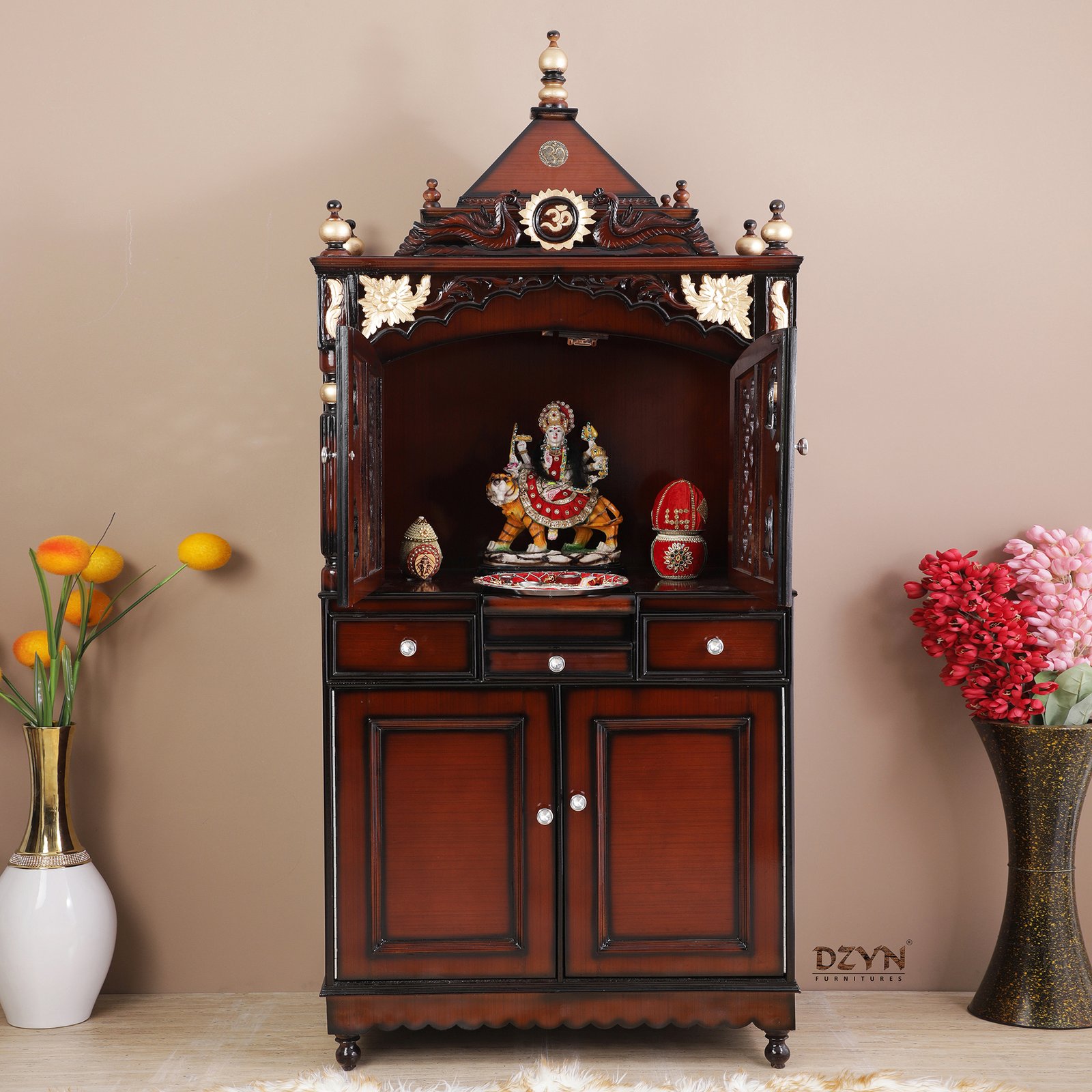A home is more than just walls and furniture—it is also the place where family values, traditions, and faith come alive. For generations, Indian households have created sacred corners where devotion is practiced daily, festivals are celebrated, and prayers are offered. Among the many ways to bring this sacredness home, a wooden pooja mandir stands out as both a spiritual anchor and a timeless piece of tradition.
Why Wooden Mandirs Hold Special Significance
Temples made of wood have been part of Indian culture for centuries. Ancient artisans carved wood into intricate temple structures for palaces and village homes. Even today, wooden mandirs are considered pure and auspicious. The natural grains and warmth of wood create a welcoming environment for worship. Unlike metal or marble, wood carries a sense of life and connection, which is why many families prefer it.
For modern homes, wooden mandirs are available in a variety of styles, making them suitable for apartments as well as spacious houses. From traditional carved domes to minimalist wall-mounted units, the choices are wide. Families exploring wooden pooja mandirs for home can find designs that balance both heritage and modern living.
Daily Rituals and Family Traditions
One of the main reasons families install a mandir is to maintain regular devotion. Morning and evening prayers create structure and mindfulness in daily life. Lighting a diya, offering flowers, or chanting mantras might seem like small actions, but they bring calmness and discipline to the household.
Children also learn values through these rituals. Watching elders perform puja, they absorb traditions naturally. Over time, these daily practices become part of their own lives, ensuring that culture and devotion pass from one generation to the next.
During festivals, the mandir becomes the heart of the celebration. Diwali diyas glowing against polished wood, Navratri decorations filling the air with color, or Janmashtami scenes adding joy—each festival feels complete when centered around the family temple.
Placement and Vastu Guidelines
The position of a mandir within a home is as important as the mandir itself. Vastu Shastra, the ancient science of design, recommends the northeast corner as the most auspicious location. Facing east while praying is also considered favorable, as it is believed to align worshippers with positive cosmic energies.
The temple should always be kept elevated, not directly on the floor. It should also be placed in a quiet, clean, and uncluttered area. Following these principles ensures that the mandir radiates peace and positivity throughout the home.
The Practical Advantages of Wooden Mandirs
Beyond cultural and spiritual significance, wooden mandirs are practical. They are durable, easy to maintain, and adaptable to different styles of interiors. Some designs include drawers and cabinets to store incense, lamps, and holy books. This keeps the space organized and makes rituals easier to perform.
Wooden mandirs also age gracefully. With regular care, they retain their shine and strength for decades. A simple polish every few months and careful handling of oil lamps ensures that the temple remains in excellent condition.
Emotional Value and Heirloom Quality
A mandir is not just a piece of furniture—it often becomes a family heirloom. Over time, it collects stories of prayers answered, festivals celebrated, and moments of quiet reflection. Families treat their temples with respect, preserving them carefully and passing them down to future generations.
In this way, a wooden mandir carries emotional value far beyond its appearance. It becomes a reminder of grandparents’ rituals, parents’ teachings, and the cultural foundation of the family.
Blending Tradition with Modernity
As lifestyles evolve, so do wooden mandirs. Compact wall-mounted designs are perfect for apartments, while freestanding temples with elaborate carvings suit larger homes. Some modern versions come with built-in lighting, glass doors, or minimalist finishes. These adaptations show how wooden temples continue to stay relevant even in contemporary interiors.
This balance between old and new ensures that devotion never feels outdated. Families can practice rituals in a way that fits seamlessly into their lifestyles without losing cultural essence.
Wooden Temples and Spiritual Energy
Many families believe that wooden mandirs hold spiritual energy because of their natural material. Wood has been associated with grounding and stability, qualities that make it ideal for a place of worship. Unlike second-hand or inherited items from unknown sources, a new wooden mandir carries fresh energy, allowing your household to begin its spiritual journey without influence from the past.
This belief is one reason families prefer to explore collections of wooden temples crafted for modern homes. With designs that suit both tradition and aesthetics, they allow devotion to thrive in its purest form.
Caring for Your Wooden Mandir
Maintaining a wooden temple is simple but meaningful. It involves not just cleaning, but also treating it with respect. Dust should be wiped daily with a soft cloth. Occasional polishing with oils keeps the wood healthy and glowing. Diyas and incense should be used carefully to prevent stains.
These small acts of care are themselves a form of devotion, showing respect for the sacred space and ensuring it remains pure for rituals.
Why Wooden Mandirs Remain Timeless
Even as homes change, with modern décor and urban lifestyles, the wooden mandir has not lost its place. Its ability to adapt to new styles, while carrying forward traditions, makes it timeless. More than a prayer unit, it is the spiritual anchor of a home, creating a connection between generations.
A Sacred Presence in Every Home
A wooden mandir does more than provide a place for rituals—it creates an atmosphere of peace, unity, and devotion. It becomes the focal point of festivals, a teacher of traditions for children, and a source of comfort for elders. Over time, it transforms from furniture into a symbol of the family’s heritage and faith.
Bringing a wooden temple into your home is not just about following tradition. It is about making space for positivity, togetherness, and timeless devotion.
